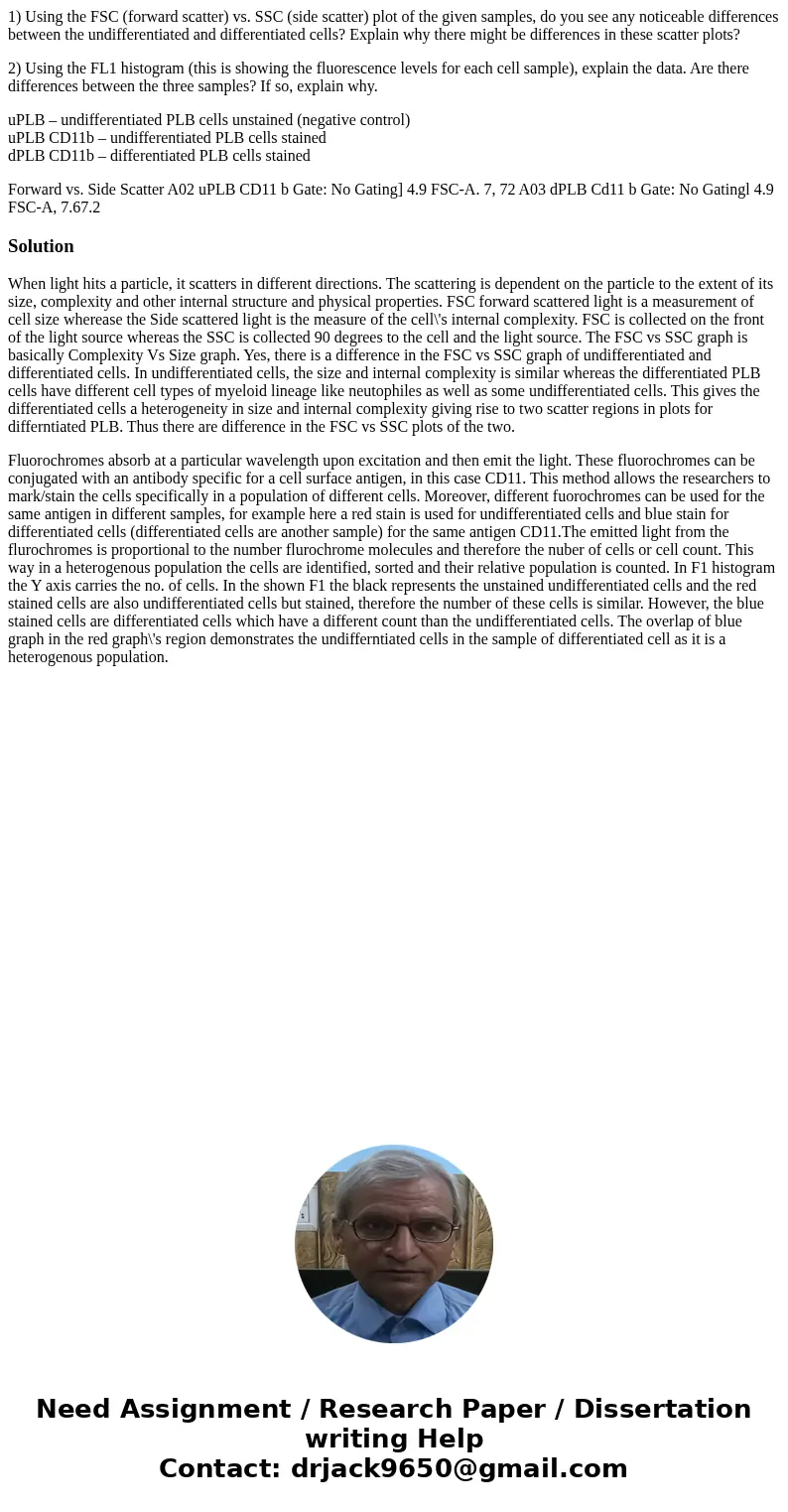1 Using the FSC forward scatter vs SSC side scatter plot of
1) Using the FSC (forward scatter) vs. SSC (side scatter) plot of the given samples, do you see any noticeable differences between the undifferentiated and differentiated cells? Explain why there might be differences in these scatter plots?
2) Using the FL1 histogram (this is showing the fluorescence levels for each cell sample), explain the data. Are there differences between the three samples? If so, explain why.
uPLB – undifferentiated PLB cells unstained (negative control)
uPLB CD11b – undifferentiated PLB cells stained
dPLB CD11b – differentiated PLB cells stained
Solution
When light hits a particle, it scatters in different directions. The scattering is dependent on the particle to the extent of its size, complexity and other internal structure and physical properties. FSC forward scattered light is a measurement of cell size wherease the Side scattered light is the measure of the cell\'s internal complexity. FSC is collected on the front of the light source whereas the SSC is collected 90 degrees to the cell and the light source. The FSC vs SSC graph is basically Complexity Vs Size graph. Yes, there is a difference in the FSC vs SSC graph of undifferentiated and differentiated cells. In undifferentiated cells, the size and internal complexity is similar whereas the differentiated PLB cells have different cell types of myeloid lineage like neutophiles as well as some undifferentiated cells. This gives the differentiated cells a heterogeneity in size and internal complexity giving rise to two scatter regions in plots for differntiated PLB. Thus there are difference in the FSC vs SSC plots of the two.
Fluorochromes absorb at a particular wavelength upon excitation and then emit the light. These fluorochromes can be conjugated with an antibody specific for a cell surface antigen, in this case CD11. This method allows the researchers to mark/stain the cells specifically in a population of different cells. Moreover, different fuorochromes can be used for the same antigen in different samples, for example here a red stain is used for undifferentiated cells and blue stain for differentiated cells (differentiated cells are another sample) for the same antigen CD11.The emitted light from the flurochromes is proportional to the number flurochrome molecules and therefore the nuber of cells or cell count. This way in a heterogenous population the cells are identified, sorted and their relative population is counted. In F1 histogram the Y axis carries the no. of cells. In the shown F1 the black represents the unstained undifferentiated cells and the red stained cells are also undifferentiated cells but stained, therefore the number of these cells is similar. However, the blue stained cells are differentiated cells which have a different count than the undifferentiated cells. The overlap of blue graph in the red graph\'s region demonstrates the undifferntiated cells in the sample of differentiated cell as it is a heterogenous population.

 Homework Sourse
Homework Sourse